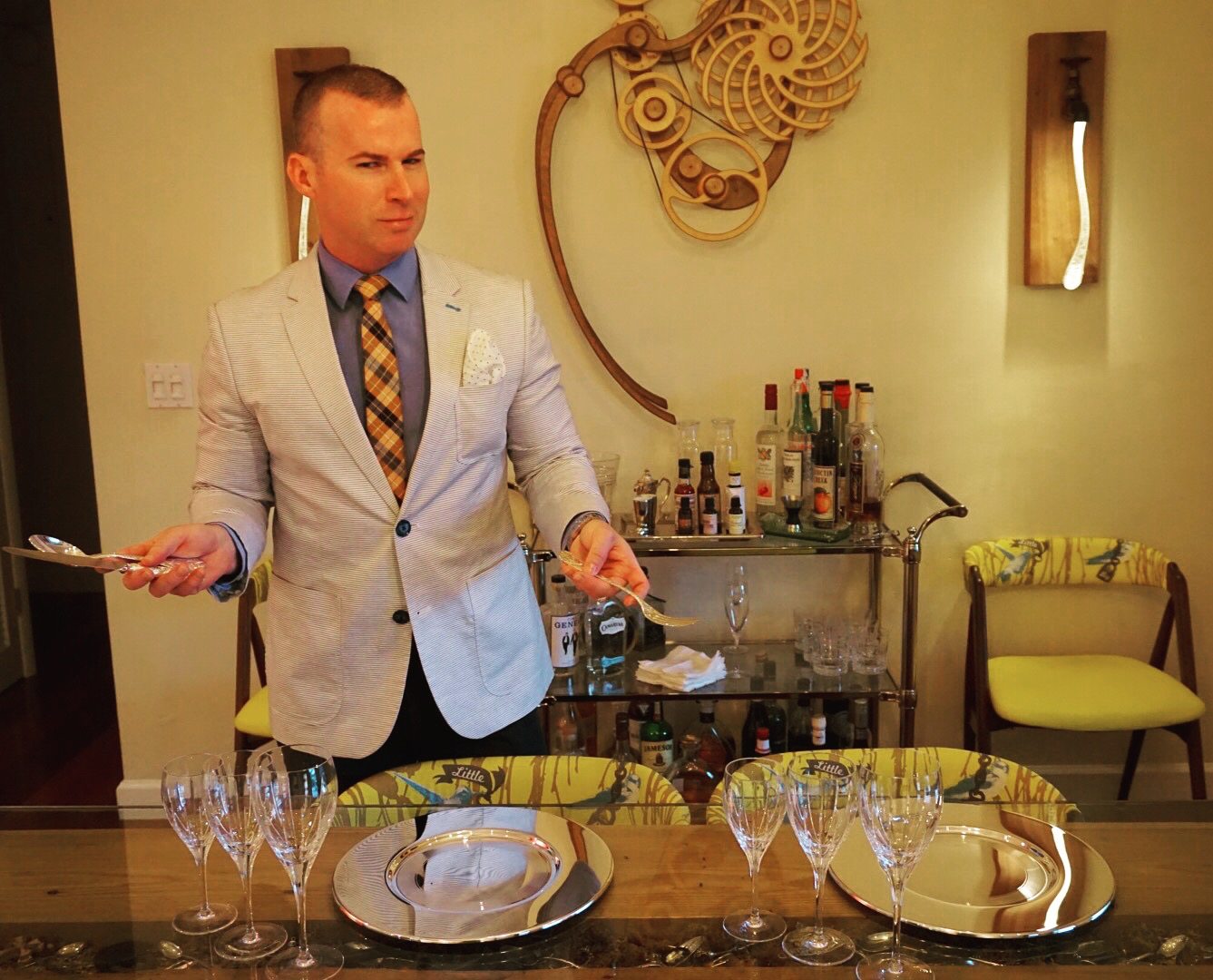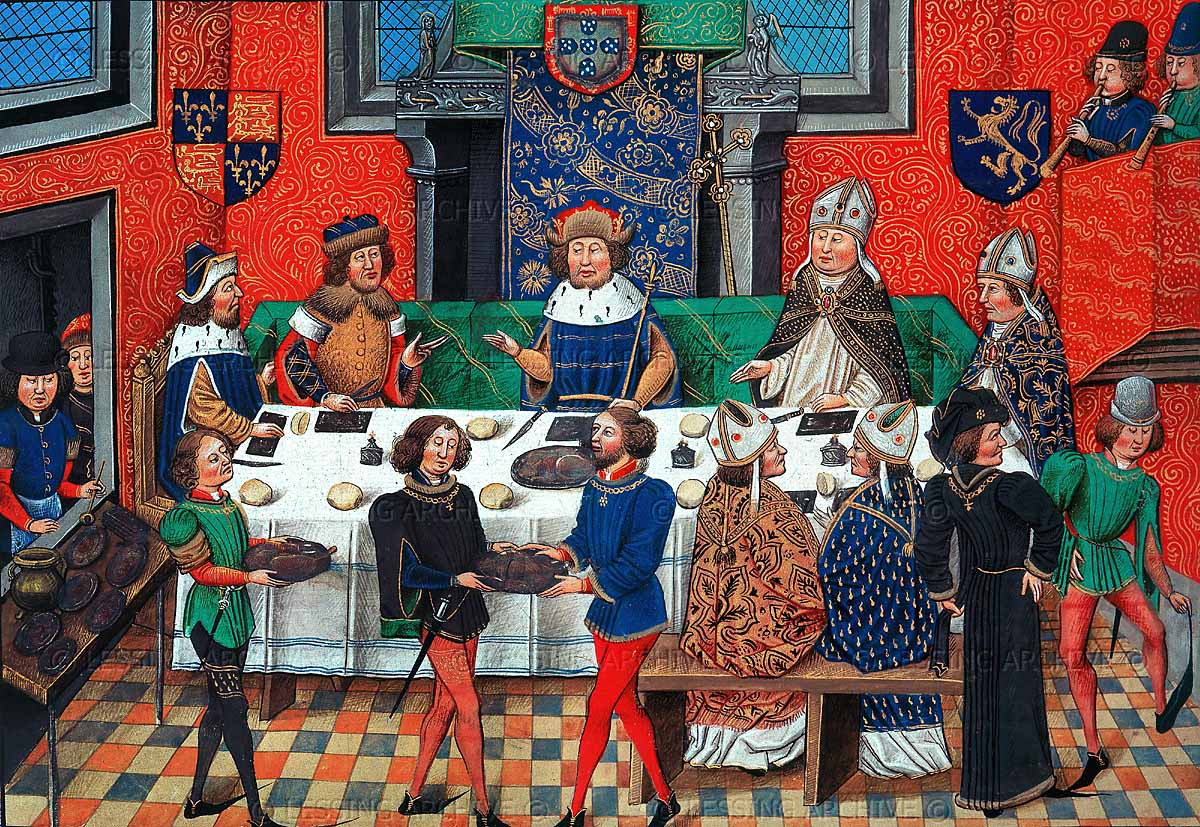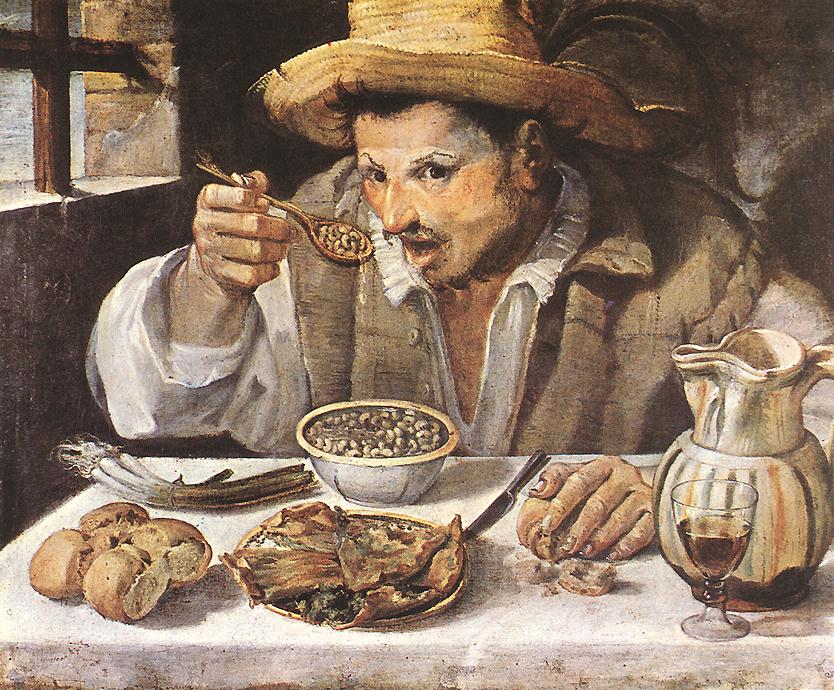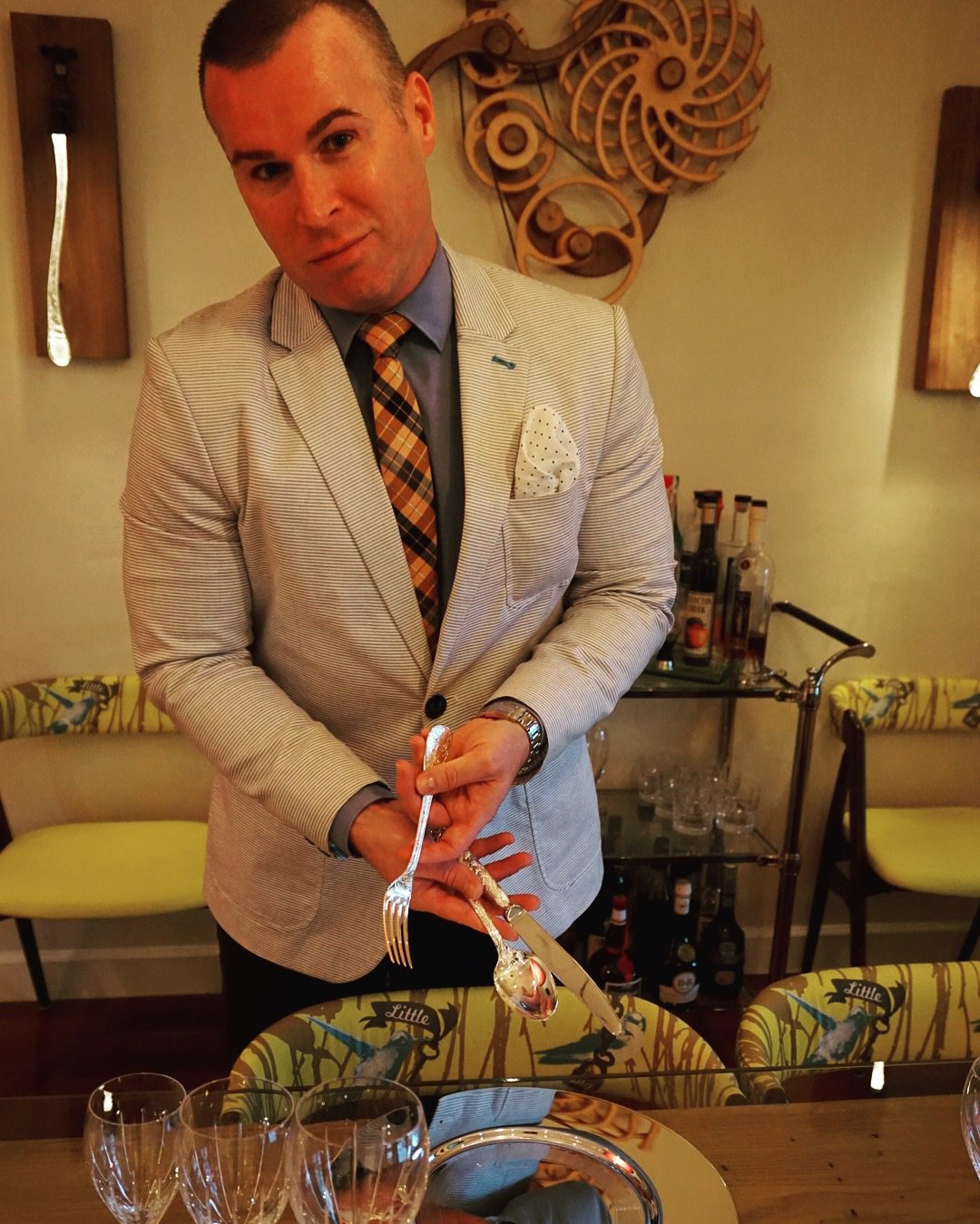
Which side do these go on again?
Long before there was a concept of “swipe right” or “swipe left” people concerned themselves with social consequences to choosing right or left for the placement of forks, knives and spoons on the table – rather than a date. To choose incorrectly could have been as socially disastrous to your reputation then as swiping right for a really bad date now.
There came a time in my early adulthood when I needed to set a table and had to reach deep into the depths of my childhood memory to conjure up what my mommy had taught. This is something I am grateful for today, but was really annoyed when I had to do it every evening as a child. Yes, my mother made dinner every evening and we sat at the table every night as a family!
Here is a simple tool I find useful to help remember which flatware items go where:
- There are 5 letters in the word RIGHT and there are 5 letters in the word KNIFE and SPOON.
- LEFT has 4 letters and so does FORK.
When you are in a pinch to set a table this is a great way to remember flatware placement. However, this would not be an ARTFUL MATTERS learning experience if I did not explain the history behind how it came to be that spoons and knives are on the right and forks on the left.

John of Gaunt dining with the King of Portugal.
It all started with the knife. This was the first table accessory man had to assist in eating their food; other than the knife, we used our hands to navigate food to our mouths. So important and useful was the knife, men not only cut and stabbed their meat with it, but also, used it for hunting and protection. I say “men” because – I am sorry to say ladies – only men could carry and use a knife at the table. Women of the period were forced to rely on men to cut their meat for them and sometimes even feeding them straight from the blade. One had to be graceful about removing the meat from the blade with their teeth or risk being speared – the latter would have made for a “bloody-rare” experience. Because most people are right handed, they held the knife with their right hand, so instinctively we placed it on the right side of the plate.
 The concept of the spoon has existed almost as long as the knife; even if it was as simple as a bowl shaped item tied to a stick. These earlier spoons were mostly used as mere serving utensils rather than instruments for eating. When people started using individual spoons for the purpose of eating, they became the first utensil to move food from the table that could both touch and enter your mouth. Because spoons originated as a stand-alone item, used to assist with liquids and/or solids mixed in a liquid, people – mostly right-handed – again placed the spoon on the right side of the plate, taking its proper placement alongside the knife.
The concept of the spoon has existed almost as long as the knife; even if it was as simple as a bowl shaped item tied to a stick. These earlier spoons were mostly used as mere serving utensils rather than instruments for eating. When people started using individual spoons for the purpose of eating, they became the first utensil to move food from the table that could both touch and enter your mouth. Because spoons originated as a stand-alone item, used to assist with liquids and/or solids mixed in a liquid, people – mostly right-handed – again placed the spoon on the right side of the plate, taking its proper placement alongside the knife.
People probably think the fork is the most useful piece of the utensil arsenal. However, the individual and personal fork was only introduced to the table in the 11th Century; until this period, it was reserved only for serving and not welcomed to the table. I will dive into the tumultuous history of the fork in a later post; for now, we will focus on its placement on the table. With its implementation, diners now had a stabilizer to assist the knife in cutting meats. It was not until sometime later that the fork was actually used to convey food to the mouth; this function was still reserved for the knife. Because the fork was an assisting utensil to the knife, and the knife was already firmly gripped in the right hand, people were forced to navigate the fork with their left hand. It is for this reason that the fork was then laid upon on the left side of the plate.

Confused? Follow me!
As I say all of this, there is always an exception to the rule – life is never black and white. So, I will leave you with this question. What fork is the only fork allowed to be placed on the right side of the table with the spoons and knives?
I welcome your answers below!


Mmmmmm salad fork?
Actually the salad fork has a corresponding knife, usually the dessert fork, so it would go on the left. The only fork that does not have a pairing piece is the oyster/seafood fork. Since it does not have a corresponding knife it is held in the right hand and therefore is placed on right side of the plate. Hope that helps!
The only fork ever to go to the right of the plate is an oyster fork.
When I was little, I was taught a cute little saying about the silverware to remember how to set the table: “The silverware had a fight; the knife and spoon were right, so the fork left!”
I LOVE THIS!!! I am going to use that one as well!! Thank you for sharing!
A fork for small shellfish – like oysters?
Correct!! I am glad to see people are enjoying reading my posts and responding.
Oyster fork
Correct!! I am glad to see people are enjoying reading my posts and responding.
Love this Justin! 🙂
Thank you so much for your kind words. I am glad to see people are enjoying reading my posts and responding.
I know but I cheated.
The oyster fork.
Correct!! I am glad to see people are enjoying reading my posts and responding.
the shellfish fork
You are absolutely correct . . . But I expected no less from you! Kisses
It’s actually a great and helpful piece of information. I’m happy that you
shared this useful information with us. Please keep us informed like this.
Thank you for sharing.
I am so glad people enjoy reading them as much as I like writing them! Thank you for the kind words!
Love it! ?
Undeniably believe that which you said. Your favorite justification appeared to be on the web the simplest thing to be aware of.
I say to you, I certainly get irked while people think about worries that they just
don’t know about. You managed to hit the nail upon the top and defined out the whole thing without having side effect , people could take a
signal. Will likely be back to get more. Thanks
So, was the oyster fork the one to the right? I always kept my forks on my left except for the dessert fork, which I switched to my right when eating. Or sometimes, I see the dessert fork on top of the dinner plate next to the cup & saucer.
I love your blog!! Justin, we used to work together when I lived in NYC. I am so happy to have found you and knowing you are doing well. What great information you give here. I am now doing event planning as part of my job and your blog is so helpful.
Hello gorgeous! Apologies for the extreme delay in response. Yes, you are correct. The only fork allowed on the right side of the plate is a seafood/oyster fork and the reasoning is because it does not have an accompanied utensil on the right. I am so glad you like my blog. I have not been able to write for some time now but getting back into it. Check back for more updates! Congrats on on the knew jog.
I love this, Justin! My daughter Pia, who loves etiquette (especially on table manners), shared this with me and all my siblings We all found it very interesting and informative! So glad you are sharing/disseminating artful matters!